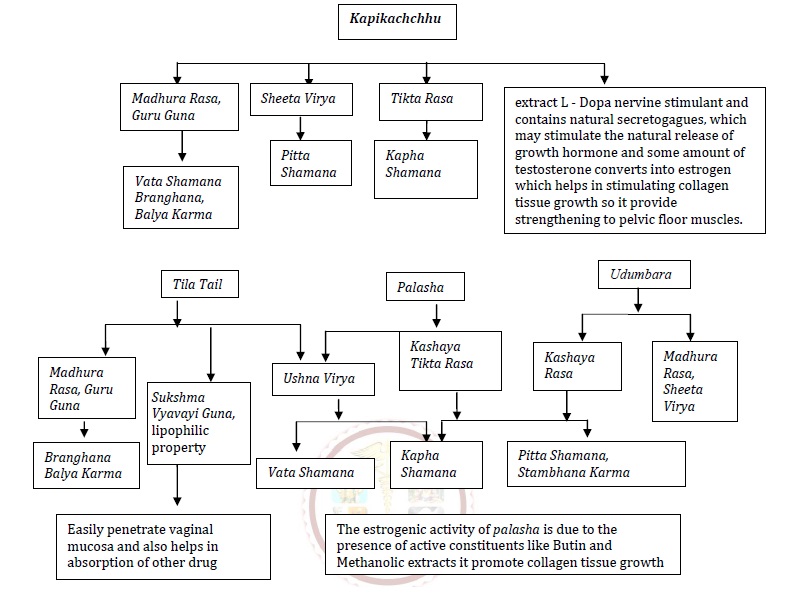A Study of Kapikachchhu Moola Kwatha for Yoni Prakshalana and Palasha Udumbara Sidhha Tail Pichu In Prasramsini/ Phalini/ Mahayoni w.s.r. to Uterovaginal Prolapse
DOI:
https://doi.org/10.47070/ayushdhara.v9i5.1042Keywords:
Pelvic organ prolapse, Prasramsini, Phalini, Mahayoni, Kapikachchhu, Yoni Prakshalana, Palasha Udumbara Tail, Yoni PichuAbstract
Pelvic organ prolapse is the downward displacement of structures that are normally located adjacent to the vaginal vault. Aims & Objectives: To study the effect of Kapikachchhu Moola Kwatha for Yoni Prakshalana (vaginal douching by Mucuna prurience) and Palasha, Udumbara Siddha Tail Pichu (vaginal tampon by oil prepared with Butea monosperma and Ficus glomerata) in Prasramsini, Phalini & Maha Yoni (Uterovaginal prolapse). To evaluate the comparative effect of Kapikachchhu Moola Kwatha Yoni Prakshalana and Palasha Udumbara Tail Yoni Pichu. Materials & Methods: Randomised control trial was conducted on 37 patients and divided in three groups, 13 patients in group A and 12-12 patients in group B and C registered. In group A, administered Palasha Udumbara Tail Yoni Pichu. In group B, administered Kapikachchhu Moola Kwatha Yoni Prakshalana. In Group C, administered combined therapy. Observations and Results: Different parameters like something coming out per vaginum, Yoni Srava (white discharge per vaginum), Yoni Kandu (itching per vaginum), Yoni Vedna (dragging pain in vagina), Parva Vankshana Shoola (Midsacral discomfort), increase frequency of micturition, stress urinary incontinence, difficulty in emptying bladder, frequency of bowel movements, straining during defecation and objective parameters assessed by POP-Q test that is; Aa and Ba on anterior compartment, C and D on middle compartment, point Ap and Bp on posterior compartment were observed before, during and after the treatment. The overall effect of therapy, in group A; 60% patients got mild relief (25.1% to 50% relief), followed by 30% got moderate relief (50.1% to 75% relief). In group B; 80% patients got mild relief. In group C; 50% patients got moderate relief and 50% got mild improvement. Conclusion: Combined therapy is more effective than single therapy. In single therapy, Group A is better than Group B. Maximum patients of Phalini and Prasramsini Yoni (2nd degree uterovaginal descent) got moderate improvement and Mahayoni (3rd degree uterovaginal descent) patients got mild improvement.
Downloads

Downloads
Published
Issue
Section
License
Copyright (c) 2022 AYUSHDHARA

This work is licensed under a Creative Commons Attribution-NonCommercial-ShareAlike 4.0 International License.


